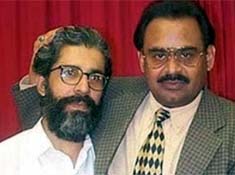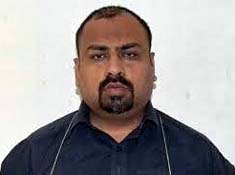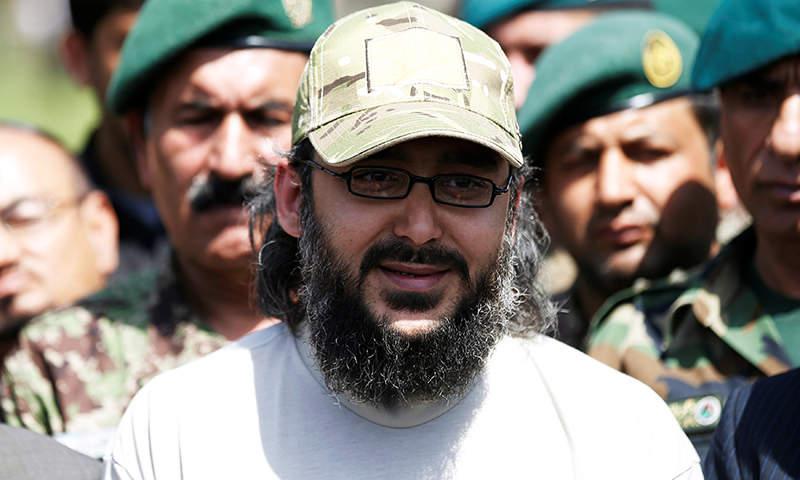Taliban also confirm Jalaluddin Haqqani’s death

NEW YORK: The Afghan Taliban have confirmed that Jalaluddin Haqqani, the founder of the Haqqani Network, had died a natural death a year ago.
The reported death of Jalaluddin Haqqani will not affect the operational capacity of the deadly militia which had pioneered the use of suicide attacks against the US-led Allied Forces in Afghanistan.
According to well-informed sources in militant circles, the aged Jalaluddin Haqqani had handed over the command of the network to his son, Sirajuddin Haqqani long ago who is in de facto control of the group, being its chief operational commander. Sirajuddin also oversees the political and military activities of Miranshah Central Shura besides serving as the main liaison to the Quetta Shura Taliban. His father Jalaluddin had fought the Soviet occupation troops with the backing of the Pakistani establishment in 1980s. Senior US officials are on the record having admitted that Jalaluddin Haqqani was a prized asset of the Central Intelligence Agency (CIA) at that time. However, he later allied himself with the Afghan Taliban led by Mulla Mohammad Omar after he took power in Afghanistan in 1996. Jalaluddin Haqqani served as a cabinet minister under the Taliban supreme leader, Mulla Omar.
Hardly 24 hours after the fugitive Ameer of the Afghan Taliban was declared dead, there are reports that Jalaluddin too had died after a long illness almost a year ago and was buried in Afghanistan. In fact, rumours about the death of the elder Haqqani have circulated for some years and can still not be independently confirmed. The latest report comes a day after the Taliban acknowledged that their leader, Mulla Omar, was dead. The Pakistani establishment had been accused by the Americans of continuing to back the Haqqani Network even after the September 2001 terrorist attacks and the subsequent fall of the Taliban regime in Afghanistan. Admiral Mike Mullen, former chairman of the Joint Chiefs of Staff, had even described the Haqqani Network as “a veritable arm of the Pakistani intelligence”, adding that it was exporting violent extremism to Afghanistan. The US military leadership has repeatedly blamed the Haqqani Network for most of the terrorist attacks on international forces stationed in Afghanistan. But in contrast to the US perception of the Haqqanis, the Pakistani establishment considers the group to be a strategic asset. Their relationship is several decades old and is also mutually beneficial. Unlike the Tehreek-e-Taliban Pakistan (TTP), the Haqqanis have no grouse against Islamabad; their goal, instead, is to have a stake in the dispensation of Kabul once the Americans leave.
The story of the Haqqani Network is entwined with the history of wars and coups and armed foreign interventions in Afghanistan. The network’s founder, Maulvi Jalaluddin Haqqani, was initially a member of Gulbuddin Hekmatyar’s Hizb-e-Islami, which in the 1970s was waging a battle against Afghan president Sardar Daud over his crackdown on nascent Islamists influenced by the Muslim Brotherhood.
Daud’s implacable opposition to the Hizb prompted its leaders to shift to Pakistan, where subsequently a faction under Maulvi Yunis Khalis split away from Hekmatyar. Haqqani emerged as one of the more important commanders of the Khalis faction.
In 1979, following the Soviet invasion of Afghanistan, Jalaluddin shifted his family and fighters from his home province of Khost to North Waziristan, from where he launched deadly strikes against the Russians in Afghanistan. Through the 1980s Jalaluddin worked in tandem with the US Central Intelligence Agency (CIA), which treated him as a commander of formidable power and repute, worthy of an invitation to meet then-president Ronald Reagan at the White House.
As the CIA feted and fawned over Jalaluddin Haqqani, he didn’t disappoint, becoming the first resistance leader to capture a city — Khost from the Soviet-backed Najibullah government in 1991. He was appointed justice minister in the first Mujahideen government in 1992, but switched his allegiance to the Taliban as they threatened Kabul. The Afghan Taliban and Maulvi Jalaluddin Haqqani shared a common friend in the ISI. As a Taliban commander in 1996-97, he was accused of killing members of Afghanistan’s Tajik minority. The shift in allegiance won him a post in the Taliban council of ministers, and he was the governor of Paktia province at the time the Americans invaded Afghanistan in 2001.
As the American juggernaut swept through Afghanistan, and Khost came under increasing pressure, Jalaluddin was back in North Waziristan, from where he directed his network of fighters to destabilise the eastern part of Afghanistan — Paktia, Paktika, Khost, Ghazni and Wardak — through attacks on the Americans. The Haqqani Network’s rising curve in the badlands of Afghanistan can be gleaned from the attacks it has been accused of masterminding even in Kabul.
During his last days, the 80-plus Jalaluddin was more a patriarch than a commander. The network’s fighting strategy is now the responsibility of his son, Sirajuddin Haqqani, who doesn’t carry a gun, refuses to move in a motorcade, and refrains from wearing a turban lest he is identified and targeted through drone attacks. The 37-year-old, known as Khaleefa among his fighters, is the second son of Jalaluddin Haqqani and is currently leading the network. Sirajuddin was nominated as the operational commander of the network when Jalaluddin Haqqani sidelined himself from the ground offensive almost a decade ago.
An an active member of the Mulla Omar-led Taliban Shura, or council, Sirajuddin is considered a fearless commander who used the influence of his ailing father not only to re-activate the anti-US Taliban fight (which was reeling after the American invasion) but also to make his network a force to be reckoned with. From safe houses and mountain hideouts, he has orchestrated some of the more brazen attacks on the US troops in recent months, eclipsing even his father in influence and power. He is on the FBI’s “kill or capture” list and carries a US$50 million bounty.
However, Sirajuddin has repeatedly made it clear in recent years that the network was a part of the Taliban movement. Despite its numerical and military strength, Haqqani isn’t leading a separate militant group and still take his orders from the Taliban Shura. He has been appointed the other day the deputy Ameer of the Afghan Taliban by the newly-appointed Ameer, Mullah Mohammad Akhtar Mansour.
The lethal Haqqani Network broadly consists of four groups: those who served under Jalaluddin Haqqani during the Russian occupation of Afghanistan; those from Loya Paktiya who joined the Haqqani movement in the aftermath of the 9/11 attacks and the subsequent invasion of Afghanistan in 2001; fighters from North Waziristan in Fata, who have been associated with the Haqqanis over the years; and non-Pashtun foreign militants, including Arabs, Chechens, and Uzbeks.
While the fighters of Haqqani Network in Afghanistan belong to a number of tribes, the vast majority of its leaders in North Waziristan are from the Zadran tribe, and in particular from Haqqani’s Mezi clan and its allies. This does not mean, however, that the Haqqanis run a tribal movement. Under the secretive conditions in which the network operates, only those bound closely by Haqqani family or clan ties can win the leadership’s trust. Jalaluddin Haqqani had two wives, one of them an Arab from the United Arab Emirates, from whom he had two sons. It is this Arab connection that is said to have enabled Jalaluddin to develop contacts with rich Arab sheikhs who finance his armed struggle in Afghanistan.
The Haqqani’s opposition to the Americans hasn’t been without a price. Jalaluddin has lost more family members than other Afghan Mujahideen leaders, first against the Soviets and later against the US-led Nato forces. Two of his sons — 17-year old Omar and 22-year-old Mohammad — have already been killed. Omar was killed in a firefight with US-led forces at Satto Kandao in Khost in 2008, while Mohammad was killed in a drone attack at Miranshah, North Waziristan, in 2009. A year before, another American drone strike killed his two wives, his sister, sister-in-law and eight of his grandchildren.
http://www.thenews.com.pk/Todays-News-13-38885-Taliban-also-confirm-Jalaluddin-Haqqanis-death




